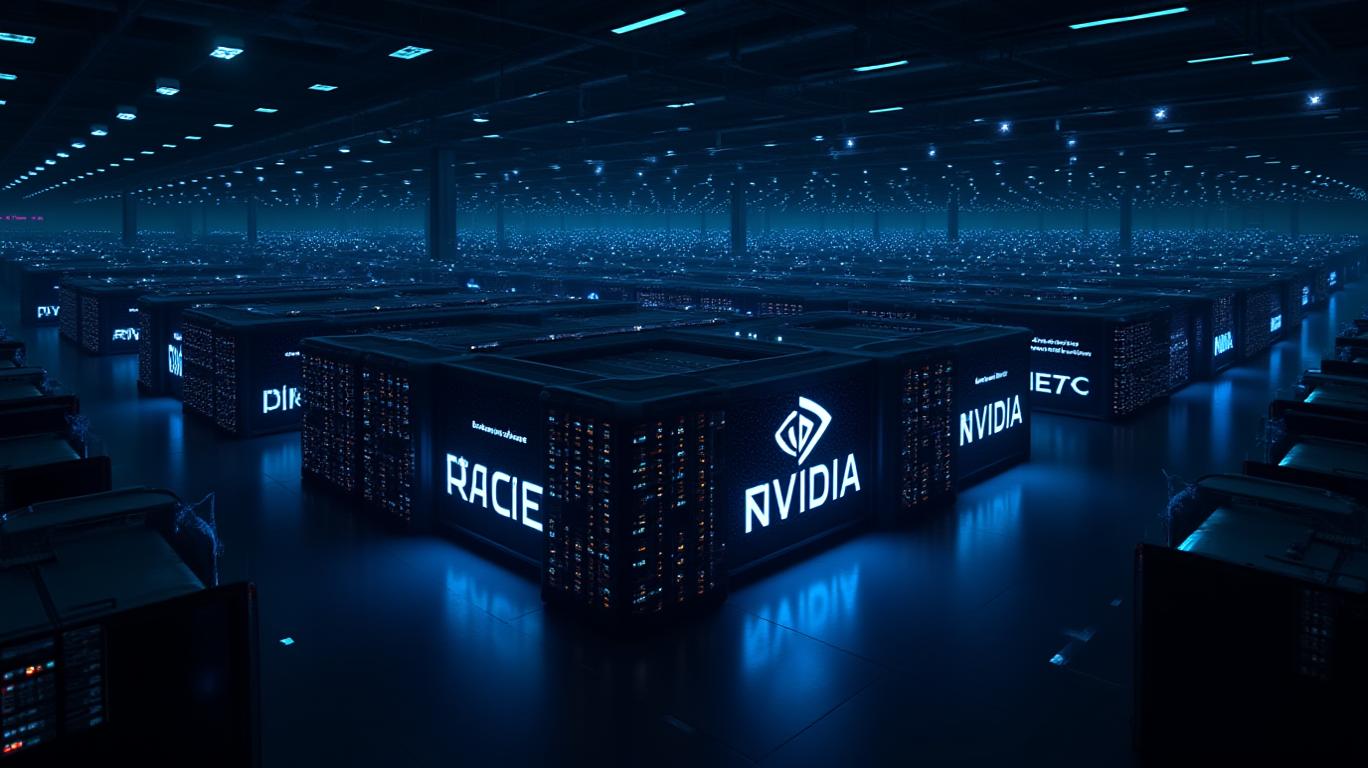Oracle's $40 Billion GPU Gamble: A New Era for AI Infrastructure and Semiconductor Demand
The race to dominate artificial intelligence infrastructure is heating up, and Oracle's $40 billion commitment to Nvidia's GPU chips marks a watershed moment in the industry. This partnership not only underscores the staggering capital required to build next-gen AI systems but also signals a seismic shift in how cloud providers, chipmakers, and tech giants are aligning to capture the $1 trillion AI platform opportunity. For investors, the deal is a clarion call to bet on semiconductor and data center tech stocks—before the secular boom fully takes hold.

Semiconductor Demand Surges: GPUs Are the New Oil
Oracle's investment—split between bulk purchases of Nvidia's Blackwell GPUs, co-development agreements for custom AI chips, and equity stakes in supply chains—reflects the voracious appetite for GPU compute power. The Stargate data center project alone requires 64,000 Blackwell GPUs by 2026, a figure that triples Nvidia's 2024 Hopper GPU sales in just two years.
This surge isn't isolated. Microsoft, Amazon, and Alibaba are racing to build similar hyperscale AI hubs, driving $330 billion in 2025 global cloud capex (up 33% YoY). Analysts estimate that Nvidia's data center revenue could hit $100 billion by 2028, as its roadmap for Vera Rubin and Vera Rubin Ultra GPUs (2026–2027) locks in dominance for high-end inference tasks.
Investment Takeaway: Chipmakers with GPU or AI-optimized silicon—like AMD (EPYCTM Instinct), Intel (Habana Gaudi), or台积电 (3nm foundry capacity)—are critical plays. The Oracle-Nvidia pact validates the “AI compute arms race” thesis, where GPU demand will outstrip supply for years.
Cloud Infrastructure: A New Battlefield for Tech Titans
Oracle's move isn't just about buying chips—it's about repositioning itself as a top-tier AI cloud provider. By leasing Stargate data centers to OpenAI and others,
is betting $5–30 billion on a “pay-to-play” model where access to cutting-edge GPUs becomes a moat. This shifts cloud competition from storage costs to compute density and AI specialization, sidelining generic hyperscalers.
The risks are clear: Stargate's first Abilene, Texas site faces delays due to U.S. tariffs on Chinese GPU components and labor shortages. If Oracle can't deliver 200MW of compute by mid-2025, it risks losing billions in committed contracts. But success could catapult Oracle into the AI cloud elite, commanding premium pricing from startups and enterprises alike.
AI Adoption: From Hype to Hard Infrastructure
The deal's true significance lies in its implications for AI adoption timelines. By 2026, Blackwell Ultra and Vera Rubin GPUs will enable 14x faster inference speeds than current systems, slashing training costs and accelerating breakthroughs in generative AI, autonomous systems, and healthcare. This creates a “virtuous cycle”: cheaper compute fuels more use cases, which in turn drives demand for even more infrastructure.
Long-term, the Oracle-Nvidia alliance could redefine industry boundaries. As OpenAI's liquidity tightens—its 2025 net loss is projected at $14 billion—partners like Oracle and SoftBank may step in as “AI infrastructure banks,” financing compute access in exchange for revenue shares. This model could democratize AI access while centralizing power in a few capital-rich players.
Catalysts to Watch: Q2 Earnings and Supply Chain Stress Tests
Investors should monitor two near-term triggers:
1. Nvidia's Q2 2025 Earnings (July): Will Blackwell Ultra shipments hit targets, or will supply chain bottlenecks (e.g., DRAM shortages, Taiwan labor strikes) drag down revenue?
2. Stargate's Abilene Site Completion (Q3 2025): Delays here could spook Oracle's stock, but a “lights-up” milestone would validate the partnership's financial model.
Positioning for the AI Infrastructure Boom
The stakes are existential. For investors:
- Buy chipmakers with GPU exposure: AMD (AMD), Intel (INTC), and台积电 (TSM) are leveraged to the compute explosion.
- Play data center tech leaders: Lam Research (LRCX), ASML (ASML), and Applied Materials (AMAT) dominate the tools needed for 3nm GPU fabrication.
- Avoid legacy cloud stocks: Generic infrastructure players may struggle as AI becomes a niche game.
The Oracle-Nvidia deal isn't just a $40 billion bet—it's a blueprint for how the next decade of tech will be built. Act now, or risk being left behind in the AI dust.
The clock is ticking. The next trillion-dollar industry is being wired today.

Comments
No comments yet